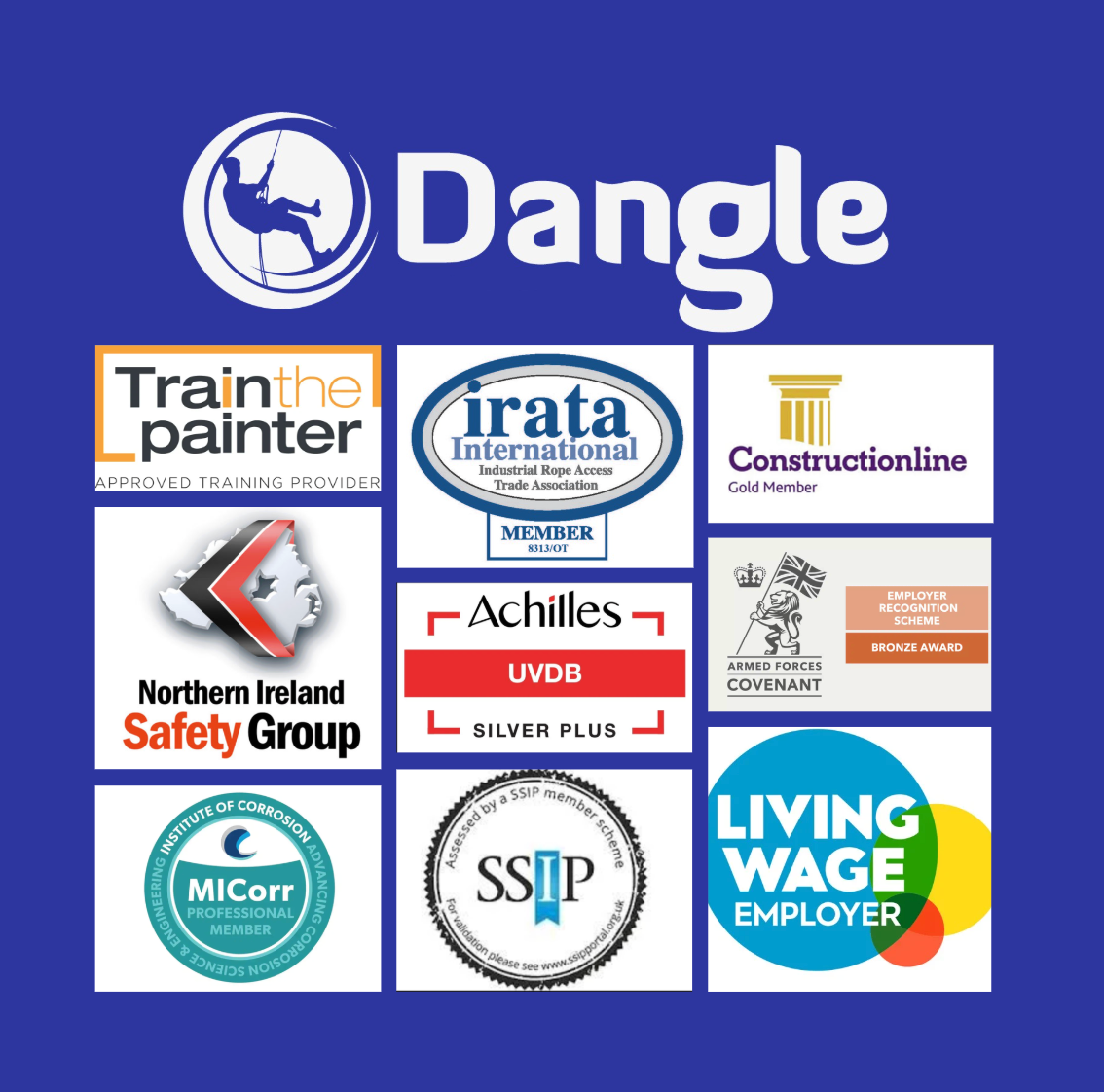Workplace Safety Training Courses

Workplace Safety Training Solutions: Essential Courses for Improved Industrial Safety
Creating a safe working environment is not simply about ticking boxes. It’s about protecting your people, your business and personal reputation, and your bottom line. Workplace safety training empowers employees with the knowledge and skills to recognise hazards, prevent accidents, and respond confidently to emergencies.
Investing in high-quality workplace safety training ensures your organisation complies with regulations and builds a culture of safety and trust that benefits everyone. Moreover, a report from International Workplace suggests effective Health and Safety training has been shown to boost productivity, job satisfaction, and reduce absenteeism, contributing to long-term career stability.
This blog post explores some of the most widely used workplace safety training courses, including:
• First Aid at Work
• Emergency First Aid at Work
• Manual Handling Training
• Fire Safety Awareness
• COSHH Awareness
• Working at Height Awareness
• Confined Space Training
This is not an exhaustive list—many workplaces will require additional, specialised training tailored to their risks and legal obligations. However, the courses described below form a solid foundation for most organisations striving to maintain high standards of occupational safety.
The Benefits of Workplace Safety Training
Before we look at individual courses, it’s worth considering why comprehensive workplace safety training is such an important investment.
Legal Compliance
Under UK law, employers are required to assess risks, provide adequate instruction and training, and maintain safe working conditions. Failing to do so can result in:
• Enforcement notices
• Prosecution and fines
• Increased insurance premiums
• Civil compensation claims
Robust training records demonstrate compliance with legislation such as:
• The Health and Safety at Work etc. Act 1974
• The Management of Health and Safety at Work Regulations 1999
• The Work at Height Regulations 2005
• The Control of Substances Hazardous to Health Regulations 2002
Fewer Accidents and Injuries
Employees who are trained to identify hazards and follow safe systems of work are far less likely to suffer harm or cause harm to others. This helps reduce:
• Absenteeism
• Lost productivity
• Costly downtime
• Stress and anxiety among staff
Increased Productivity
Safe working practices enable teams to operate more efficiently. Fewer incidents mean fewer disruptions, smoother workflows, and higher morale.
A Positive Safety Culture
A workforce that feels valued and protected is more likely to engage fully with their roles. Workplace safety training reinforces the message that safety is everyone’s responsibility.
Personal Benefits of Workplace Safety Courses for Employees
While workplace safety training benefits employers, it also offers significant advantages for employees. Certifications help individuals feel more confident, capable, and prepared to handle emergencies and challenging situations.
Completing accredited workplace safety training courses can:
• Boost Career Prospects: Many roles require up-to-date certifications, which strengthen CVs and improve promotion opportunities.
• Build Confidence: Knowing how to manage risks and respond effectively increases peace of mind at work.
• Develop Leadership Skills: Courses such as fire safety or confined space training teach communication, organisation, and coordination.
• Improve Job Satisfaction: Employees who feel prepared and valued often enjoy greater engagement and motivation.
• Provide Transferable Skills: Knowledge like first aid can prove useful beyond the workplace in everyday life.
By investing in professional development, employees not only protect themselves but also enhance their skills and future career potential. A report provided by the Operation for Economic Co-operation and Development (OECD) suggests adults with recognised certifications (including health and safety, construction tickets, and first aid) are more likely to be employed, earn higher wages, and progress in their careers.
Overview of Core Workplace Safety Training Courses
First Aid at Work
Course Overview
As part of effective workplace safety training, First Aid at Work is a comprehensive three-day training programme designed to equip designated workplace first aiders with the skills to manage a wide range of medical emergencies confidently. Training typically includes:
• Assessing and managing incidents
• Performing cardiopulmonary resuscitation (CPR) and using an automated external defibrillator (AED)
• Treating bleeding, burns, fractures, and shock
• Managing medical conditions such as asthma and diabetes
• Recording and reporting incidents appropriately
Who Should Attend?
This workplace safety training course is aimed at employees who have been designated as first aiders in medium- to high-risk workplaces, such as:
• Construction sites
• Manufacturing plants
• Warehouses
• Large offices
Legal Considerations
Employers have a duty under the Health and Safety (First-Aid) Regulations 1981 to provide adequate first aid provision. For higher-risk environments, First Aid at Work is the recommended minimum standard.
Emergency First Aid at Work
Course Overview
Emergency First Aid at Work is a vital element of workplace safety training, offering essential skills to handle life-threatening incidents. Content generally includes:
• Incident and casualty assessment
• Basic cardiopulmonary resuscitation (CPR) and use of an automated external defibrillator (AED)
• Managing choking, bleeding, burns, and shock
• Minor injuries management
Who Should Attend?
This workplace safety training course is suitable for:
• Low-risk environments (offices, retail)
• Smaller workplaces
• Supporting trained first aiders in higher-risk settings
Legal Considerations
This training helps employers comply with the Health and Safety (First-Aid) Regulations 1981 by ensuring appropriate first aid arrangements based on their risk assessment.
Manual Handling Training
Course Overview
Manual Handling Training is a key component of workplace safety training, providing employees with the skills to lift, carry, push, and pull loads safely. A typical course includes:
• Understanding the musculoskeletal system and injury mechanisms
• Identifying manual handling risks
• Safe lifting techniques and use of mechanical aids
• Planning and assessing tasks
• Practising correct handling methods
Who Should Attend?
This training is essential for any employee who regularly handles loads as part of their duties, including:
• Warehouse operatives
• Delivery drivers
• Construction workers
• Facilities staff
Legal Considerations
Under the Manual Handling Operations Regulations 1992, employers must:
• Avoid hazardous manual handling where possible
• Assess unavoidable manual handling risks
• Reduce risk of injury through training and control measures
Fire Safety Awareness Training
Course Overview
Fire Safety Awareness Training is another crucial aspect of workplace safety training, equipping employees with the knowledge to prevent fires and respond appropriately in an emergency. The course typically covers:
• Fire prevention principles
• Common causes of workplace fires
• The fire triangle and how fires spread
• Raising the alarm and evacuation procedures
• Types and use of fire extinguishers
Dangle Academy also provide live fire extinguisher demonstrations, unlike most other training centres in Northern Ireland.
Who Should Attend?
All staff should receive basic fire safety awareness. In addition:
• Fire marshals or wardens require enhanced role-specific training.
Legal Considerations
The Regulatory Reform (Fire Safety) Order 2005 requires employers to:
• Assess fire risks
• Provide suitable training and information
• Nominate and train fire wardens where appropriate
COSHH Awareness Training
Course Overview
COSHH Awareness Training supports workplace safety training by helping employees understand how to work safely with hazardous substances. COSHH stands for the Control of Substances Hazardous to Health. Typical content includes:
• Identifying hazardous substances and interpreting labels
• Understanding exposure routes and health effects
• Using control measures (personal protective equipment, ventilation)
• Storage, handling, and disposal procedures
• Emergency response to spills or exposures
Who Should Attend?
Any employee who may come into contact with hazardous substances, such as:
• Cleaners
• Maintenance teams
• Production operatives
• Laboratory staff
Legal Considerations
Under the Control of Substances Hazardous to Health Regulations 2002 (COSHH), employers must:
• Assess and control exposure risks
• Provide suitable training and information
• Ensure safe working procedures are followed
Working at Height Awareness Training
Course Overview
Falls from height are a leading cause of workplace fatalities and serious injuries. Working at Height Awareness Training is a core part of workplace safety training, providing essential instruction on:
• Legal responsibilities and risk assessments
• Selecting appropriate access equipment
• Safe use of ladders, towers, and mobile elevating work platforms (MEWPs)
• Harness inspection and fall arrest systems
• Edge protection and exclusion zones
• Emergency rescue planning
Who Should Attend?
This training is suitable for anyone whose role requires them to:
• Work above ground level
• Supervise others working at height
• Plan or manage work at height activities
Examples include:
• Roofers
• Scaffolders
• Telecom engineers
• Maintenance personnel
Legal Considerations
Employers must comply with the Work at Height Regulations 2005, which require:
• Planning and supervising work at height
• Ensuring competence and training
• Using appropriate equipment and control measures
Confined Space Awareness Training
Course Overview
Confined Space Awareness Training is another critical element of workplace safety training, preparing employees to work safely in environments with limited entry and exit, known as Confined space work. Topics include:
• Defining confined spaces and recognising hazards (e.g., toxic gases, oxygen deficiency)
• Risk assessments and safe systems of work
• Permit-to-work procedures
• Atmospheric monitoring
• Use of breathing apparatus and personal protective equipment in Low, Medium and High-Risk Confined Space's
• Emergency rescue planning
Who Should Attend?
Anyone who:
• Enters or supervises work in confined spaces
• Issues permits for confined space entry
Examples include:
• Utility engineers
• Maintenance teams
• Tank cleaners
Legal Considerations
The Confined Spaces Regulations 1997 require employers to:
• Avoid entry where possible
• Assess and control risks
• Provide adequate training and equipment
• Develop emergency arrangements
Maintaining Competence Through Ongoing Workplace Safety Training
Completing initial workplace safety training is only the start. Regular refreshers, toolbox talks, and practical drills are essential to keep knowledge current and reinforce safe behaviours. Employers should:
• Maintain up-to-date training records
• Reassess training needs after incidents or changes in work activities
• Provide refresher workplace safety training at recommended intervals
Why Choose Dangle’s Academy?
Here at Dangle, we pride ourselves on offering a wide range of professional and comprehensive inspection, access, coatings, and composite (IACC) industrial services and industrial training courses to cater to the needs of both the private and public sectors. Our dedication to providing high-quality work at height solutions and training has helped us establish a strong reputation in the industry.
With a team of highly skilled and experienced professionals, we are committed to delivering exceptional results that not only meet but exceed our clients' expectations. Our on-site working at height services are designed to minimise maintenance costs in the long and short-term, allowing our clients to save on valuable resources.
Located in Belfast, Northern Ireland, our headquarters serve as the centre of our operations across Ireland. However, we also have a Dangle office based in Scotland, ensuring that we can extend our services to a wider clientele across the United Kingdom. No matter where you are located, our team is always ready to assist you with your industrial maintenance or training needs.
If you would like to learn more about how our dedicated team can help you, we encourage you to get in touch with us today. Our friendly and professional staff are always available to provide you with the information and support you require.


